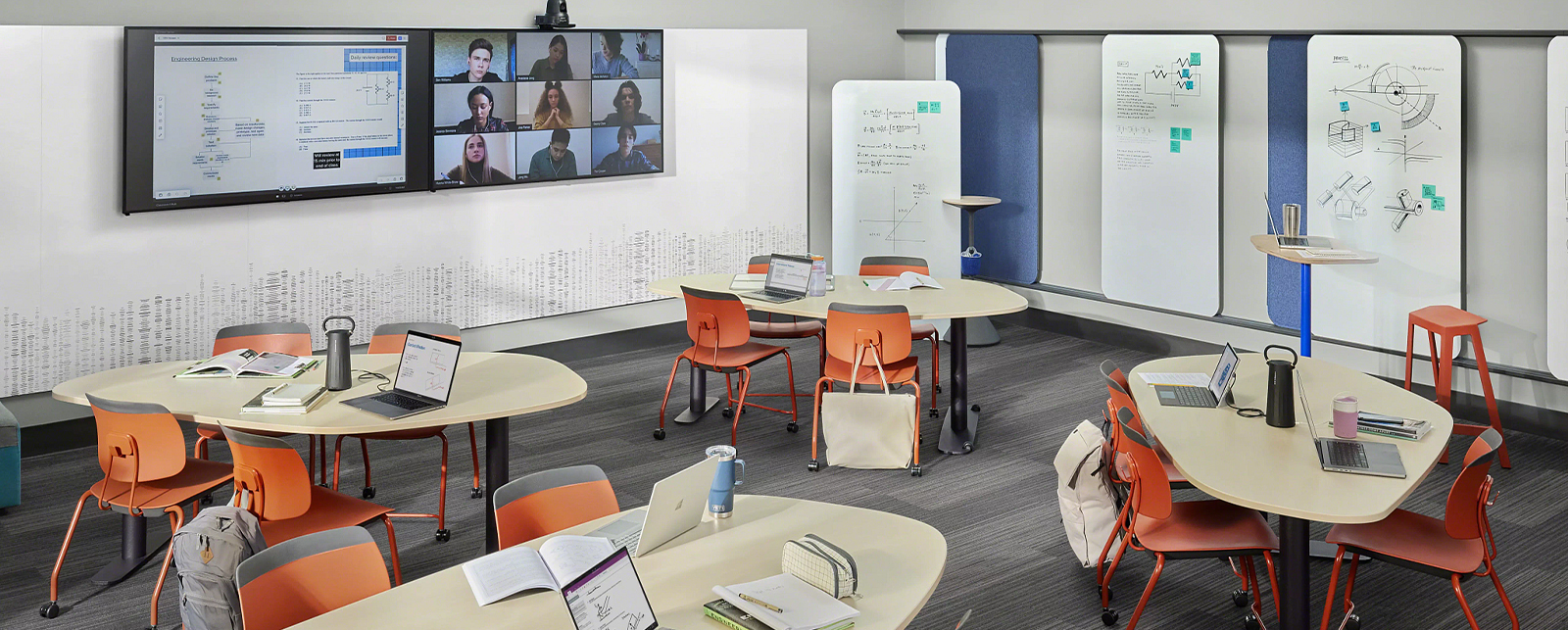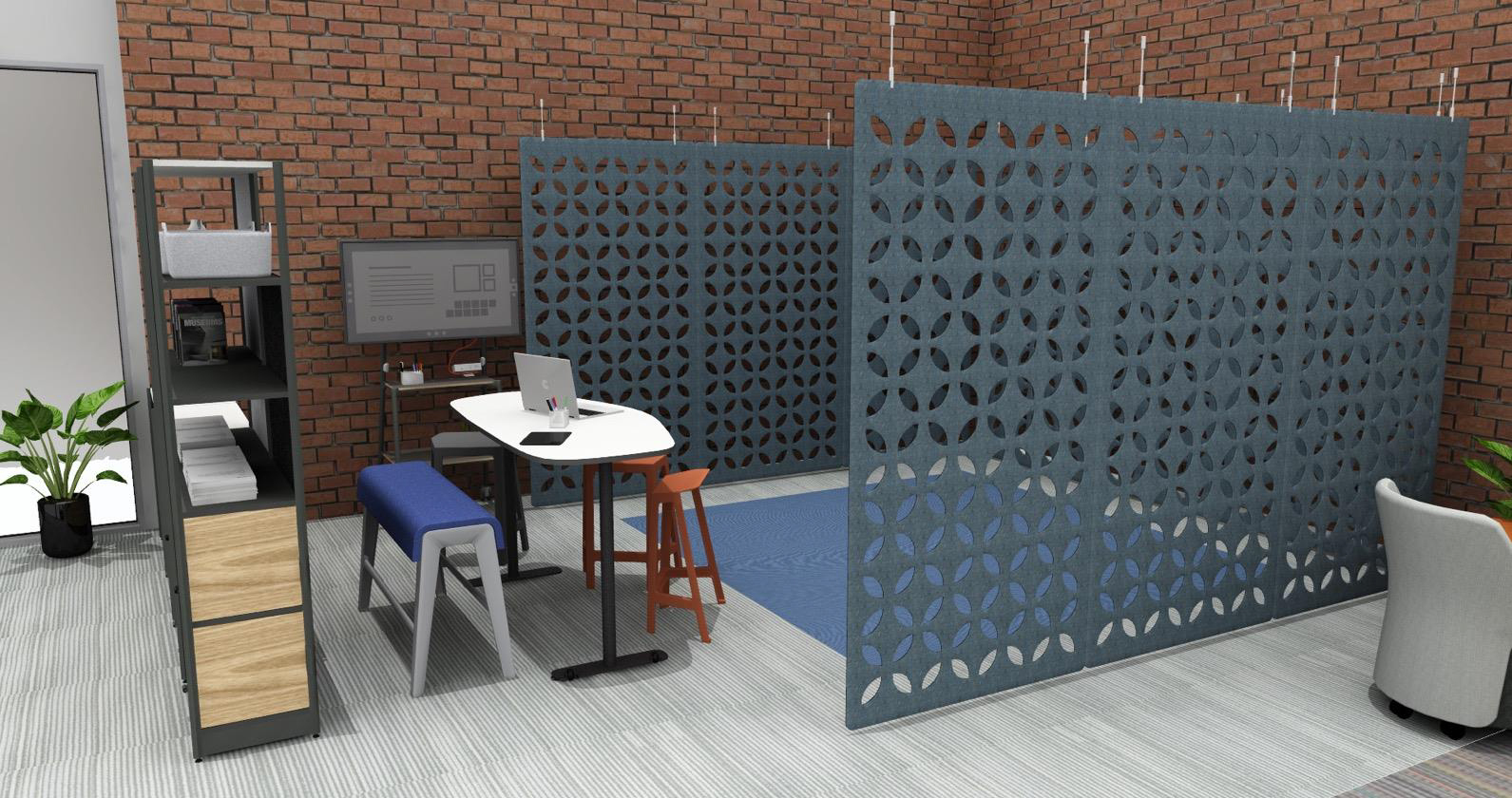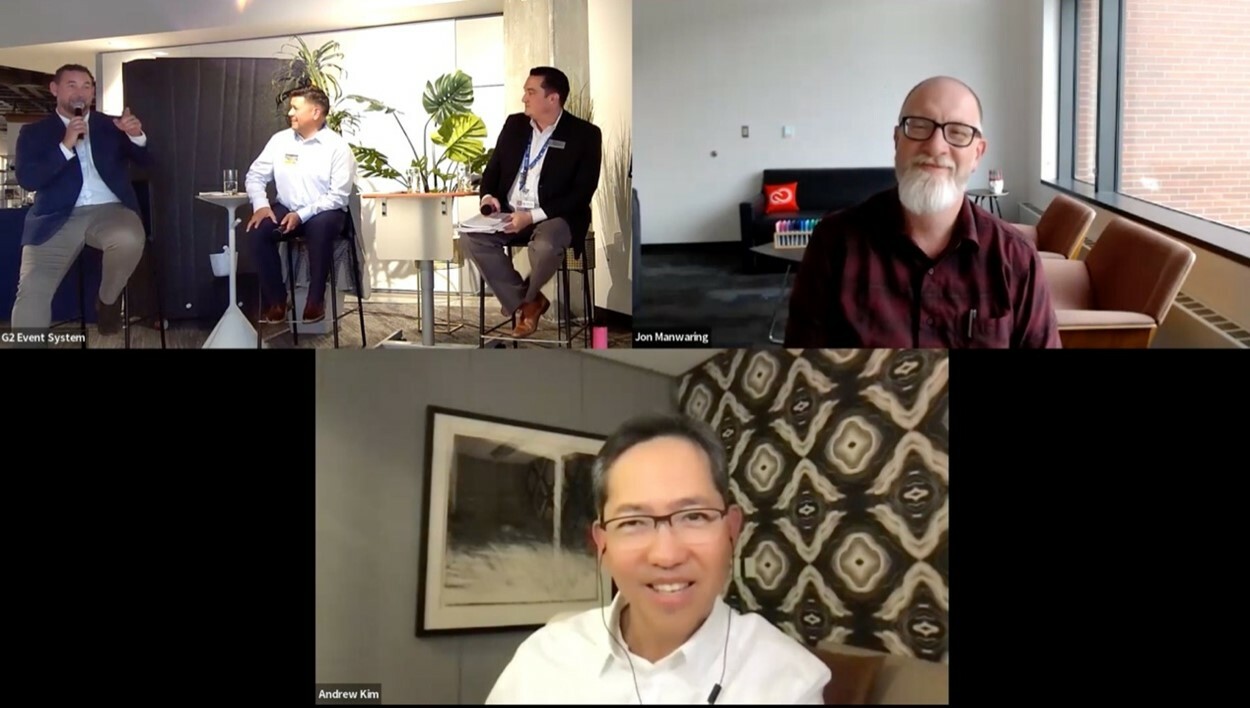

Learning environments have entered an era of rapidly shifting models and expectations. New learning styles, evolving technologies, and the mandate to maximize and adapt to different teaching methods and learning outcomes means designers are tasked with creating built environments that are more fluid than ever.
In the wake of so much change, how can we help students remain active participants in the learning process? What roles do teachers play in student engagement? And how can we leverage existing resources to reduce costs and enhance learning experiences? To explore the current dynamics in learning environments, Seattle colleagues at OpenSquare hosted an in-depth hybrid discussion with in-house and remote education and design experts. Together, we discussed how building learning experiences and environments that encourage and engage might prepare the next generation of students for success.
Throughout the discussion, we uncovered several steps educators and designers can take as they consider learning environments. Here are the top three:
1. Design with Intent
How do classrooms with traditional seats in rows and columns support collaborative learning and mobile computing? They don’t. Andrew Kim with Steelcase WorkSpace Futures walked us through a timeline of physical and digital demands on learning environments. And we know when designing learning environments, schools traditionally provide designers with a set of uniform criteria, from cabinet lengths to surface finishes. These criteria are often outdated. Most importantly, they rarely consider the importance of social connection and dynamic activities throughout the day – all the natural ways students learn.
Designing effective learning spaces must begin with intent and by identifying learning goals. One panelist shared a middle school project planning story, where the design team first worked with educators to brainstorm all the activities they plan for students. From there, they considered the amenities, technology and group sizes that drive the activities. Then they looked at how different spaces could provide support. Finally, they outlined the required adjacencies between different learning spaces. Sounds simple, let’s make it a standard process.

Designing learning environments with intent is a good start to maximize teaching and learning achievement. But it isn’t solely the job of the designer. Dennis Purcell, Director of Remote and Blended Learning for Federal Way Public Schools pointed out success also depends on involving teachers and students in the process to unlock the potential within any learning environment.
2. Map Your Assets
School construction and renovation funding face regular budgetary constraints. To ensure money is spent wisely, planners should review existing resources through a holistic lens of both school and community – and then use those resources effectively. Starting with the community and asset mapping might identify resources that can add value to the project.
Panelist Steve Murakami, Hutteball + Oremus Architecture, shared a success story of an elementary school that delivered a creative asset solution. After community mapping, the team discovered an underutilized public library across the street from the elementary school. Since the school needed a library, Steve suggested building a bridge to connect the school with the library. This solution created a win-win solution – providing students with safe access to the library and increasing the public library’s utilization.
Another example of creative asset utilization is happening at WSU Pullman, where Jon Manwaring and his Learning Innovations team recognized that multiple schools/disciplines had needs for similar technologies, makerspaces, etc. That led to the creation of an index of technology and space assets that all students and educators can tap, improving learning resources across campus and lowering facilities costs.
3. Consider Different Learning Needs
Equity is the foundation for Universal Design for Learning (UDL), a teaching approach designed to meet the needs of all learning styles and abilities. Learning environments should also be designed to support flexible needs of different pedagogies, learning styles, student engagement, and learning outcomes.
One unique challenge reviewed by the panel was the need to create a seamless trans-language experience. The project team was tasked with providing immediate access to accurate academic language to non-native English-speaking students to learn and express themselves concurrently with English speaking students. While real-time translation technology can help, the design of the space also needs to support these interactions. Designers must remember that not all learning solutions are digital. Blending analog and digital (the pencil and the pixel) experiences will continue to be an important criterion as we look to the future.
Staying One Step Ahead of Constant Change
Times have changed, educators and designers must adapt. Gone are the days when instructors and students conversed and ideated over social gatherings. In today’s world, these opportunities for social connections often happen at informal spaces across school campuses.
Whether it’s embracing new technologies, blending the physical and the digital or addressing the impact of social isolation, intentionally curating learning environments can enhance interaction, ideation and innovation. And while it’s true that traditional (and often outdated) planning remains in place in many schools, we must continue to challenge the norms and more intentionally create learning spaces mapped for the future of education.
Thanks to our Mapping the Future panelists for continuing to advocate for and describe the change our schools and students need. Link to the full conversation recording here. And please reach out to our Learning Environments team with any questions or challenges, we've got solutions.
